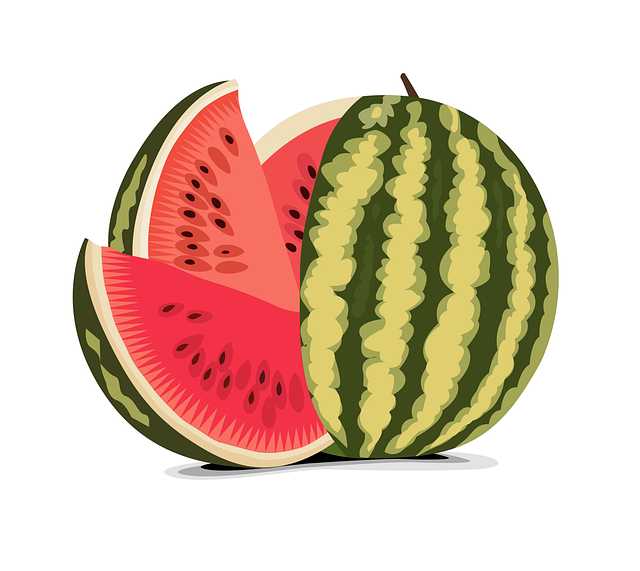Table of Contents
- Current Trends in Million-Dollar Modern Art Sales
- Iconic Pieces That Redefined Value in Contemporary Art
- The Artists Behind High-Value Works and Their Unique Styles
- Understanding the Market: What Drives Prices in Modern Art
- Investment Insights: Collecting Modern Art as an Asset
- Q&A
- Future Outlook


Current Trends in Million-Dollar Modern Art Sales
The contemporary art market is experiencing a dynamic shift, where creativity meets commerce in unprecedented ways. Auction houses are continuously witnessing artwork selling for mind-boggling sums, a trend driven by high-profile collectors, digital technologies, and the democratization of art appreciation through online platforms. Investors are increasingly viewing modern art not just as cultural assets but as viable financial investments, leading to skyrocketing prices for select pieces.
Among the defining characteristics of today’s million-dollar sales are the prominence of emerging artists and the blending of traditional techniques with modern themes. With the rise of social media, artists gain instant recognition and access to a global audience. As a result, works from previously underrepresented voices have been fetching impressive prices. Collectors are particularly interested in art that challenges societal norms and engages with contemporary issues, such as identity, environmental concerns, and political commentary.
| Artist | Artwork | Sale Price ($) | Auction House | Year |
|---|---|---|---|---|
| Banksy | Girl with Balloon | 1.4 Million | Sotheby’s | 2018 |
| Jean-Michel Basquiat | Untitled | 110.5 Million | Sotheby’s | 2017 |
| Damien Hirst | The Golden Calf | 18 Million | Christie’s | 2008 |
Furthermore, the influence of NFTs (Non-Fungible Tokens) has introduced a new layer to art sales, allowing digital creations to command significant prices often reaching the millions. By enabling artists to tokenize their work, NFTs open up fresh avenues for transactions and authentic ownership. This wave is particularly appealing to tech-savvy collectors eager to invest in the intersection of technology and art, making modern art more relevant and accessible than ever.


Iconic Pieces That Redefined Value in Contemporary Art
Throughout the evolution of contemporary art, certain works have emerged as monumental indicators of cultural value, reshaping how we perceive and invest in art. One such piece is “Salvator Mundi,” attributed to Leonardo da Vinci, which fetched a staggering $450.3 million at auction in 2017. This painting not only redefined the boundaries of pricing in the art world but also sparked debates about authenticity and ownership. The profound impact of this sale extended beyond the financial realm, illuminating the intersection of art, politics, and global capitalism.
Another iconic work that has captured the attention of collectors and critics alike is “Boy and Dog in a Johnnypump” by Jeff Koons. Sold for $11.8 million in 2013, this balloon-animal sculpture is a testament to the artist’s unique ability to blend high art with pop culture influences. Koons masterfully challenges the traditional notions of value and beauty, inviting audiences to question what constitutes art in a rapidly changing society. His works often evoke nostalgia while simultaneously offering a critique of consumerism, reflecting the complexity of modern cultural landscapes.
Equally noteworthy is “Untitled (Rabbit)” by the artist Jeff Koons, which sold for an astonishing $91.1 million in 2019. This stainless steel sculpture exemplifies the intersection of humor and craftsmanship, drawing attention for its playful yet polished aesthetic. Koons’ ability to elevate everyday objects into fine art speaks to the transformative power of contemporary creators. Moreover, this sale marked a shift in the perception of contemporary art as a legitimate investment vehicle, challenging the traditional hierarchy within the art world and prompting emerging artists to explore new themes and mediums.
The Artists Behind High-Value Works and Their Unique Styles
Throughout the years, numerous artists have captured the attention of collectors and art enthusiasts alike, leading to works being sold for astounding sums. One notable figure is Jean-Michel Basquiat, whose vibrant and chaotic style reflects a fusion of social commentary and personal narrative. His ability to blend different mediums, such as graffiti and neo-expressionism, creates a raw, energetic aesthetic that speaks to the complexities of black identity and urban life. Basquiat’s pieces, like “Untitled” (1981), have reached auction prices of over $110 million, elevating his status as a contemporary icon.
Then we have Damien Hirst, a provocateur known for his controversial installations that often challenge the notions of life and death. His series, “The Physical Impossibility of Death in the Mind of Someone Living,” features a preserved shark in formaldehyde, pushing the boundaries of traditional art. Hirst’s notorious use of unconventional materials and bold themes has led to record-breaking sales, with his work “Lullaby Spring” fetching around $19 million. His distinctive style is characterized by a stark juxtaposition of beauty and morbidity, enticing viewers to confront their own perceptions.
Yayoi Kusama has made waves with her psychedelic, polka-dot artworks that encompass a plethora of formats, from paintings to immersive installations. Famed for her Infinity Rooms, Kusama’s art explores themes of infinity and self-obliteration, inviting viewers to experience her unique vision of existence. Her piece “White No. 28” achieved over $7 million at auction, illustrating the powerful impact of her enveloping patterns and emotional depth. Kusama’s work underscores the significance of personal experience in the creation of high-value art, transcending mere aesthetics.


Understanding the Market: What Drives Prices in Modern Art
Modern art’s market dynamics are influenced by a multitude of factors that together contribute to the valuation of contemporary works. Buyers often seek pieces that resonate with their personal aesthetic preferences; however, the emotional response elicited by an artwork is only one piece of the puzzle. Market trends, artist reputation, and the uniqueness of each piece also play critical roles in influencing prices. For example, artworks from well-established artists like Damien Hirst and Jeff Koons command higher prices due to their market prominence and previous auction success.
Another essential factor driving art prices is supply and demand. The concept extends beyond mere availability; it encompasses the cultural relevance of the artwork and its potential for appreciation. Limited editions or one-of-a-kind masterpieces often create a sense of urgency among collectors and investors, pushing prices to extraordinary heights. To illustrate this point, consider the following influential trends:
- Emerging Artists: Works by new artists can gain value rapidly if they become trendy.
- Cultural Significance: Art that corresponds with historical or social movements tends to attract higher bids.
- Auction House Influence: The reputation of the auction house organizing the sale can boost perceived value.
external economic factors, such as inflation and the current financial climate, can significantly impact the art market. In times of economic prosperity, collectors are more willing to invest in high-value pieces. Conversely, economic downturns may lead to a reassessment of luxury expenditures, influencing how artworks are priced. The interplay between these elements results in a constantly evolving market landscape, challenging both collectors and artists to navigate their strategies effectively.


Investment Insights: Collecting Modern Art as an Asset
In recent years, the realm of modern art has increasingly captivated investors looking to diversify their portfolios. This shift stems from the recognition that contemporary pieces often appreciate faster than traditional investments. Collectors are not just motivated by passion; they’re also drawn by the allure of potential returns. Notable examples include artworks by the likes of Jeff Koons and Damien Hirst, which have commanded staggering auction prices, transcending artistic value to become powerful financial assets.
Investing in modern art requires an understanding of key factors that influence market trends. Some of these include:
- Artist Reputation: Emerging artists can yield exponential returns as their recognition grows.
- Provenance: The history of ownership can enhance an artwork’s value significantly.
- Market Trends: Global art fairs and exhibitions can dramatically shift demand.
Exploring the market can unveil hidden gems, especially in niche areas. Art fairs like Art Basel or Frieze London provide opportunities to connect directly with artists and galleries, making them ideal for discovering works that may soon gain popularity. Tracking auction results can also be insightful; examining recent sales can reveal how specific styles are performing or which artists resonate with collectors. Understanding these dynamics can empower investors to make informed decisions and potentially secure profitable pieces for their collections.
| Artist | Artwork | Sale Price | Auction House |
|---|---|---|---|
| Jean-Michel Basquiat | Untitled (1981) | $110.5 million | Sotheby’s |
| Salvador Dalí | Portrait of My Dead Brother | $20 million | Christie’s |
| Andy Warhol | Silver Car Crash (Double Disaster) | $105 million | Phillips |
